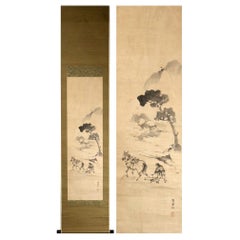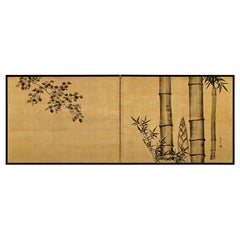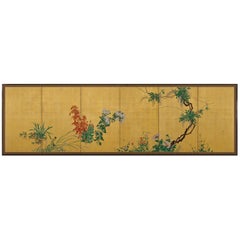Kishi Renzan
Antique Mid-19th Century Asian Edo Paintings and Screens
Gold Leaf
Antique Mid-19th Century Japanese Meiji Paintings and Screens
Silk
Antique Mid-19th Century Japanese Edo Paintings and Screens
Gold Leaf
Recent Sales
Antique 1840s Japanese Edo Paintings and Screens
Gold Leaf
People Also Browsed
2010s Wall Lights and Sconces
Brass
20th Century English Chesterfield Sofas
Upholstery
Vintage 1960s French Mid-Century Modern Armchairs
Fabric, Wool, Upholstery, Velvet, Rope, Plywood
Antique 19th Century Japanese Meiji Paintings and Screens
Brass
Antique 19th Century British Neoclassical Dining Room Tables
Brass
Mid-20th Century Japanese Mid-Century Modern Vases
Bronze
Mid-20th Century Thai Rustic Decorative Baskets
Bamboo
Vintage 1960s Italian Mid-Century Modern Lounge Chairs
Leather, Plywood
Vintage 1930s Italian Art Deco Vanities
Wood, Parchment Paper
20th Century Figurative Sculptures
Rock Crystal, Bronze
Antique 19th Century French Egyptian Revival Mantel Clocks
Marble, Bronze
Vintage 1960s Chinese Paintings and Screens
Wood
Antique Mid-19th Century Swedish Gustavian Grandfather Clocks and Longca...
Metal
Antique Late 19th Century Japanese Meiji Paintings and Screens
Gold Leaf
20th Century Japanese Showa Decorative Baskets
Bamboo
Vintage 1920s Indonesian Organic Modern Pedestals and Columns
Wood
Finding the Right Paintings-screens for You
Traditional Asian paintings were often created on scrolls and folding screens. Artisans made screens that could be folded up or spread out by connecting several panels using hinges. Today, antique Asian folding screens and paintings are sophisticated decorative accents that can serve as makeshift partitions to ensure privacy.
The original folding screens were created by Chinese artists. The earliest record of screens comes from the 2nd century B.C., and surviving examples date back to the Ming dynasty. Chinese painting utilizes many of the same tools as calligraphy — these screens were crafted from wood with painted panels featuring striking art or calligraphy that told cultural stories or represented nature and life in the area.
The practice was introduced to Japan, where paintings for screens were made on paper and silk, in the 8th century. These paintings frequently feature subjects such as landscapes, animals, flowers and Buddhist religious themes. Along with screens for tea ceremonies and dance backgrounds, there were screens for use in Shinto and Buddhist temples.
In the 17th century, screens began to be imported to Europe where their popularity grew. Coco Chanel famously collected Coromandel folding screens.
Traditional Asian paintings can make a tasteful addition to any wall, and screens can be used as decoration or, in the case of larger iterations, as an aesthetic way to divide a large room. Browse the selection of antique Asian paintings and screens from a variety of styles and eras on 1stDibs.



